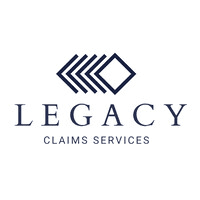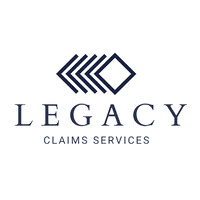Not sure if We Insure is right for you?
Talk to a Franchise Advisor who can match you with your perfect franchise based on your goals, experience, and investment range.
Talk to an Expert
We Insure
How much does We Insure cost?
Initial Investment Range
$69,445 to $136,945
Franchise Fee
$51,241 to $52,041
The franchise offered is to own and operate a Property and Casualty, and General Lines insurance agency that offers, sells and services insurance policies through a variety of insurance carriers to the general public.
Enjoy our partial free risk analysis below
Unlock the full risk analysis to access 9 more categories covering 100+ risks.
We Insure April 28, 2025 FDD Risk Analysis
Free FDD Library AI Analysis Date: July 16, 2025
DISCLAIMER: Not Legal Advice - For Informational Purposes Only. Consult With Qualified Franchise Professionals.
Franchisor Stability Risks
Start HereDisclosure of Franchisor's Financial Instability
High Risk
Explanation
The franchisor's audited financial statements in Item 21 reveal a history of significant net losses, including over $9 million in 2023, leading to a large retained deficit. While the loss was much smaller in 2024, this history of unprofitability, combined with a balance sheet dominated by intangible assets and goodwill, may indicate financial weakness. This could potentially impact the ability of We Insure, LLC (We Insure) to support you and grow the brand.
Potential Mitigations
- A franchise accountant should perform a detailed analysis of the financial statements, including all footnotes and trends over the past three years.
- Discussing the company's path to profitability and current financial health with the franchisor's management can provide important context.
- Your attorney should verify if any financial performance bonds or escrow arrangements are required by state regulators due to the financial condition.
High Franchisee Turnover
High Risk
Explanation
Item 20 data reveals a significant decline in the number of franchised outlets over the last two years, with a high rate of units being "Reacquired by Franchisor" or "Ceased Operation." This high turnover rate, exceeding 15% annually, is a critical red flag. It may suggest systemic problems, such as franchisee unprofitability or dissatisfaction with the business model, which could affect your potential for success. The franchisor notes many reacquisitions are absorbed into other agencies.
Potential Mitigations
- It is critical to contact a significant number of former franchisees from the list in Exhibit F to understand their reasons for leaving the system.
- Your accountant should help you analyze the turnover data tables to calculate the precise rate of churn over the past three years.
- Engaging a business advisor to question the franchisor about the high turnover and the nature of the "reacquisitions" is highly recommended.
Rapid System Growth
Low Risk
Explanation
This risk was not identified. The data in Item 20 indicates the franchise system has been shrinking over the past two years, not growing rapidly. Rapid growth can strain a franchisor's ability to provide adequate support. While shrinking presents its own set of concerns, which are captured in other risks like "High Franchisee Turnover," the specific risk of overstretched resources due to rapid expansion does not appear to be present here.
Potential Mitigations
- A business advisor can help you evaluate whether the franchisor's growth plans are sustainable and supported by adequate infrastructure.
- Reviewing the franchisor's financials with your accountant can help determine if they have the capital to support planned growth.
- It is wise to ask existing franchisees about the quality of support they receive, which can be an indicator of a franchisor's ability to manage growth.
New/Unproven Franchise System
High Risk
Explanation
While the franchisor has been operating since 2009, it underwent a significant ownership change in 2021, is experiencing high franchisee turnover, and has a history of financial losses. This combination of factors suggests a system in a state of flux rather than a stable, proven one. An unproven or transitioning system can carry higher risks related to support, brand recognition, and long-term viability, which you should carefully consider.
Potential Mitigations
- Conducting extensive due diligence on the current parent company's track record with franchise systems is a task for your business advisor.
- Speaking to franchisees who have been with the system before and after the 2021 ownership change can provide valuable insight.
- Your attorney can help you assess the stability of the system and whether additional protections can be negotiated into the agreement.
Possible Fad Business
Low Risk
Explanation
This risk was not identified. The business of selling property, casualty, and general lines insurance is a well-established and essential service. While market conditions and competition change, the core business is not based on a fleeting trend or fad. Therefore, the risk of the entire business concept becoming obsolete due to shifting consumer interests appears low.
Potential Mitigations
- A business advisor can help you research the long-term stability and trends within the independent insurance agency industry.
- Even in a stable industry, you should evaluate how technology and direct-to-consumer models might impact the business in the future.
- Discussing the franchisor's strategies for adapting to industry changes with their management team can provide insight into their long-term vision.
Inexperienced Management
Medium Risk
Explanation
The President, appointed in September 2023, was previously a top-producing franchisee. While this provides valuable field-level insight, Item 2 does not detail extensive prior experience in managing a large franchise corporation from the franchisor side. Other executives have varied backgrounds. A lack of deep corporate franchise management experience can sometimes affect strategic decisions and the development of support systems for a large network of franchisees.
Potential Mitigations
- A business advisor can help you assess the collective experience of the entire management team as listed in Item 2.
- Speaking with current franchisees about the quality of leadership, strategic direction, and support since the current President took the role is important.
- It is useful to research the professional backgrounds of the key executives to better understand their experience in franchising and insurance.
Private Equity Ownership
High Risk
Explanation
Item 1 discloses that the franchisor is owned by PEAK6 Insurtech Holdings, LLC, which appears to be a private equity or investment firm. Such ownership can introduce risks, as decisions may prioritize investor returns on a specific timeline over the long-term health of franchisees. This could manifest as pressure to increase fees, cut support costs, or focus on rapid franchise sales. The franchisor's right to sell the system without your consent further compounds this risk.
Potential Mitigations
- Having a business advisor help you research the ownership group's reputation and track record with other franchise systems is advisable.
- It is important to ask current franchisees if they have noticed any changes in fees, support, or system focus since the acquisition.
- Your attorney should review the assignment clauses in the Franchise Agreement to understand your rights if the system is sold again.
Non-Disclosure of Parent Company
Low Risk
Explanation
This risk was not identified. The FDD clearly discloses in Item 1 that We Insure is owned by PEAK6 Insurtech Holdings LLC. The provided financial statements in Item 21 are for We Insure, LLC and its subsidiary. While the parent company's financials are not included, there is no indication that they are required by rule or that the parent is guaranteeing the franchisor's obligations, which would trigger such a requirement.
Potential Mitigations
- An attorney can help you understand the corporate structure and determine if the parent company has any direct obligations to you.
- If a parent company provides a guarantee, your accountant must review the parent's financials for stability.
- Always ask your attorney to clarify which entity is responsible for fulfilling the franchisor's promises.
Predecessor History Issues
High Risk
Explanation
This risk is present. The franchisor discloses in Item 1 a history of restructuring and operating under different predecessor names. Furthermore, Item 3 discloses two significant lawsuits filed by former franchisees against a predecessor entity, We Insure, Inc. These lawsuits included allegations of fraud and breach of contract and resulted in substantial settlement payments by the predecessor. This history could indicate past systemic issues that may or may not have been resolved under the current ownership.
Potential Mitigations
- Your attorney must carefully review the details of the litigation disclosed in Item 3 to understand the nature of the past allegations.
- Asking the franchisor what specific changes have been implemented to address the issues raised in the predecessor litigation is crucial.
- A business advisor can help you research the history of the brand and its predecessors to look for patterns of franchisee complaints.
Pattern of Litigation
High Risk
Explanation
Item 3 discloses two prior lawsuits brought by franchisees against the franchisor's predecessor. The allegations included breach of franchise agreement, fraud, and violations of the Florida Deceptive and Unfair Trade Practices Act. Both cases were settled, with the franchisor's predecessor paying the former franchisees significant amounts ($254,500 and $127,906). This pattern of litigation involving serious claims like fraud, even against a predecessor, is a significant risk and warrants careful consideration.
Potential Mitigations
- A thorough review of the specific allegations and settlement details in Item 3 with your franchise attorney is critical.
- It is important to ask the franchisor what has changed in their operations or agreements to prevent similar disputes from arising in the future.
- You should discuss this litigation history with current and former franchisees to get their perspective on the franchisor's business practices.
Disclosure & Representation Risks
Example Risk: Franchisee Financial Obligations
Blue Risk
Explanation
This risk involves the financial obligations that a franchisee must meet, including initial fees, ongoing royalties, and other required payments. Understanding these obligations is crucial for long-term success.
Potential Mitigations
- Carefully review the Franchise Disclosure Document (FDD) and consult with a franchise attorney to fully understand all financial commitments before signing.
- Conduct regular risk assessments
- Implement monitoring and reporting systems
Unlock Full Risk Analysis
Purchase the complete risk review to see all 102 risks across all 10 categories.
Financial & Fee Risks
Example Risk: Franchisee Financial Obligations
Blue Risk
Explanation
This risk involves the financial obligations that a franchisee must meet, including initial fees, ongoing royalties, and other required payments. Understanding these obligations is crucial for long-term success.
Potential Mitigations
- Carefully review the Franchise Disclosure Document (FDD) and consult with a franchise attorney to fully understand all financial commitments before signing.
- Conduct regular risk assessments
- Implement monitoring and reporting systems
Unlock Full Risk Analysis
Purchase the complete risk review to see all 102 risks across all 10 categories.
Legal & Contract Risks
Example Risk: Franchisee Financial Obligations
Blue Risk
Explanation
This risk involves the financial obligations that a franchisee must meet, including initial fees, ongoing royalties, and other required payments. Understanding these obligations is crucial for long-term success.
Potential Mitigations
- Carefully review the Franchise Disclosure Document (FDD) and consult with a franchise attorney to fully understand all financial commitments before signing.
- Conduct regular risk assessments
- Implement monitoring and reporting systems
Unlock Full Risk Analysis
Purchase the complete risk review to see all 102 risks across all 10 categories.
Territory & Competition Risks
Example Risk: Franchisee Financial Obligations
Blue Risk
Explanation
This risk involves the financial obligations that a franchisee must meet, including initial fees, ongoing royalties, and other required payments. Understanding these obligations is crucial for long-term success.
Potential Mitigations
- Carefully review the Franchise Disclosure Document (FDD) and consult with a franchise attorney to fully understand all financial commitments before signing.
- Conduct regular risk assessments
- Implement monitoring and reporting systems
Unlock Full Risk Analysis
Purchase the complete risk review to see all 102 risks across all 10 categories.
Regulatory & Compliance Risks
Example Risk: Franchisee Financial Obligations
Blue Risk
Explanation
This risk involves the financial obligations that a franchisee must meet, including initial fees, ongoing royalties, and other required payments. Understanding these obligations is crucial for long-term success.
Potential Mitigations
- Carefully review the Franchise Disclosure Document (FDD) and consult with a franchise attorney to fully understand all financial commitments before signing.
- Conduct regular risk assessments
- Implement monitoring and reporting systems
Unlock Full Risk Analysis
Purchase the complete risk review to see all 102 risks across all 10 categories.
Franchisor Support Risks
Example Risk: Franchisee Financial Obligations
Blue Risk
Explanation
This risk involves the financial obligations that a franchisee must meet, including initial fees, ongoing royalties, and other required payments. Understanding these obligations is crucial for long-term success.
Potential Mitigations
- Carefully review the Franchise Disclosure Document (FDD) and consult with a franchise attorney to fully understand all financial commitments before signing.
- Conduct regular risk assessments
- Implement monitoring and reporting systems
Unlock Full Risk Analysis
Purchase the complete risk review to see all 102 risks across all 10 categories.
Operational Control Risks
Example Risk: Franchisee Financial Obligations
Blue Risk
Explanation
This risk involves the financial obligations that a franchisee must meet, including initial fees, ongoing royalties, and other required payments. Understanding these obligations is crucial for long-term success.
Potential Mitigations
- Carefully review the Franchise Disclosure Document (FDD) and consult with a franchise attorney to fully understand all financial commitments before signing.
- Conduct regular risk assessments
- Implement monitoring and reporting systems
Unlock Full Risk Analysis
Purchase the complete risk review to see all 102 risks across all 10 categories.
Term & Exit Risks
Example Risk: Franchisee Financial Obligations
Blue Risk
Explanation
This risk involves the financial obligations that a franchisee must meet, including initial fees, ongoing royalties, and other required payments. Understanding these obligations is crucial for long-term success.
Potential Mitigations
- Carefully review the Franchise Disclosure Document (FDD) and consult with a franchise attorney to fully understand all financial commitments before signing.
- Conduct regular risk assessments
- Implement monitoring and reporting systems
Unlock Full Risk Analysis
Purchase the complete risk review to see all 102 risks across all 10 categories.
Miscellaneous Risks
Example Risk: Franchisee Financial Obligations
Blue Risk
Explanation
This risk involves the financial obligations that a franchisee must meet, including initial fees, ongoing royalties, and other required payments. Understanding these obligations is crucial for long-term success.
Potential Mitigations
- Carefully review the Franchise Disclosure Document (FDD) and consult with a franchise attorney to fully understand all financial commitments before signing.
- Conduct regular risk assessments
- Implement monitoring and reporting systems
Unlock Full Risk Analysis
Purchase the complete risk review to see all 102 risks across all 10 categories.







